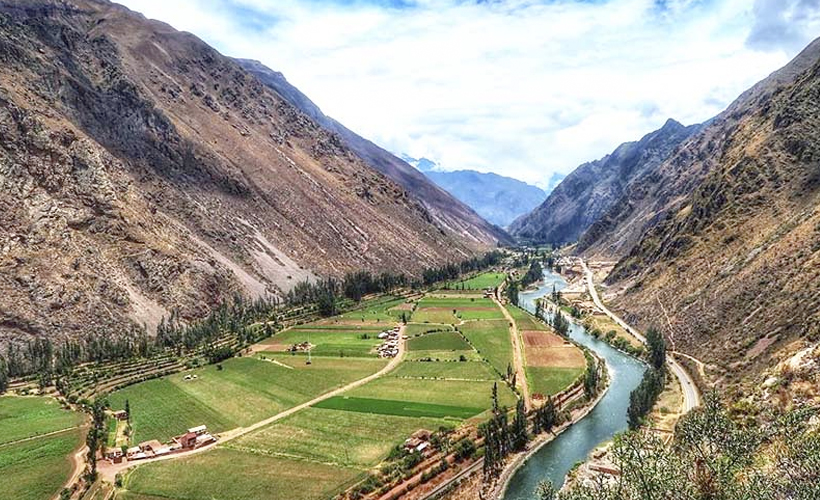The Sacred Valley of the Incas

In 1442, the Incas were flourishing, namely under the command of Pachacutec. It was he who formed the Inca Empire of Tahuantinsuyo (Chinchaysuyo, Antisuyo, Contisuyo y Collasuyo) which would soon become the largest empire to ever reign in pre-Columbian America. During this period the Sacred Valley was a source of food for the Incas because of its incredible ecological floors at different altitudes. Its main crops were white corn, potatoes, coca, fruit, and vegetables, which continue being grown to date.
It was called the Sacred Valley because it contains some of the best lands in the region and was not a part of the Empire but the property of the Emperor or Inca himself.
What can you see in Sacred Valley?
There are several well-preserved Inca archeological sites to visit and its dramatic landscapes are home to Quechua communities that offer unique opportunities to interact with the local culture. It is home to animals that were of great importance during the Inca Empire. We can name these 2: Llamas and Alpacas.
Llama
The llama is a South American relative of the camel, though the llama does not have a hump. (Their wild relatives are guanacos and vicuñas). Llamas were the Incas’ most important domestic animals, providing food, clothing and acting as beasts of burden. Typically, they are saddled with loads of 50 to 75 pounds.
They were also often sacrificed in large numbers to the gods.
Alpaca
The alpaca (Vicugna pacos) is a species of South American camelid descended from the vicuña. It is similar to, and often confused with, the llama. However, alpacas are often noticeably smaller than llamas.
Related to the vicuña, llama, and guanaco the alpaca is a rare and precious animal thought to be a cross between llamas and vicuñas some 6000 years ago.
They were treasured by the ancient Inca civilization, the fine fleeces were reserved for Inca royalty. Together with their close relatives, the llamas, alpacas provided clothing, food, fuel and, no doubt, companionship as domesticated animals high in the altiplano of Peru, Chile and Bolivia.
Pisac
Pisaq is a picturesque town with colonial and mestizo characteristics. The term Pisac might come from the word in Quechua P´isaqa which is the name of a bird that exists in this area. Other Quechua experts support the theory that the word comes from the name Cristóbal Pisaq Topo who used to live in the area.
Pisac Inca Ruins: It is located 3.5km from the town of Pisac at an altitude of 3347 m.a.s.l.
It takes up an entire mountain made up of different neighborhoods or squares, the main one being Intihuatana, which is admired for the architectural skill with which its constructions were built.
The complex is also famous for the colossal terraces that circle the mountains.

Weather:
In Pisac, the wet season is overcast, the dry season is partly cloudy, and it is cool year-round. Over the course of the year, the temperature typically varies from 2° y 21°C (32°F to 64°F).
The best times of year to visit Pisac for warm-weather activities are from early May to early October.
Pisac is divided into 2 parts, the archeological, which is the ancient part located on the high side of the valley, and the contemporary, which dates from colonial times, located at the low side of the valley itself.
Pisac Market: The colorful Pisac market offers all sorts of handicrafts featuring textiles, jewelry, and ceramic goods.
Sunday is the most festive market day as people from the highland native communities come in their best traditional dress to sell or trade their products. It is fun to explore the typical food section of the market on Sundays, where you will find all types of native Andean potatoes, and exotic fruit brought from the nearby rainforest.



 Qualified Guides
Qualified Guides Sustainable Tourism
Sustainable Tourism Quality Service
Quality Service Unforgetable Experiences
Unforgetable Experiences Affordable Prices
Affordable Prices




